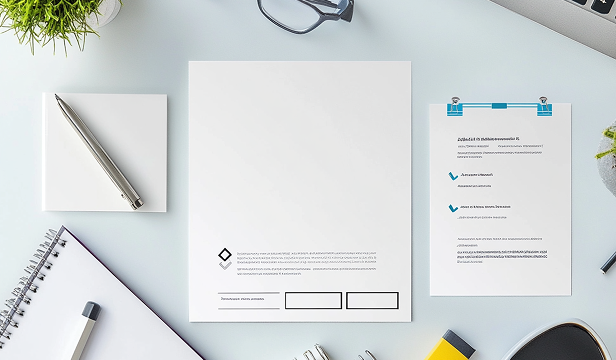Artificial Intelligence (AI) is revolutionizing the creative industry, particularly in video production. AI-generated videos are…

Stationery design plays a vital role in shaping a company’s brand perception. Business cards, letterheads, and other corporate stationery serve as tangible representations of a brand’s professionalism, credibility, and attention to detail. Here’s how well-designed business cards and letterheads contribute to brand identity and influence customer perception.
1. First Impressions Matter
Why It Matters:
A business card or letterhead is often the first physical interaction a client has with your brand. A well-crafted design leaves a lasting impression and signals professionalism.
How to Implement:
- Use high-quality materials such as thick cardstock for business cards.
- Choose a sleek, minimalistic design that aligns with brand aesthetics.
- Include essential details in a structured and legible manner.
2. Reinforces Brand Identity
Why It Matters:
Consistency in stationery design ensures that every communication piece reflects the brand’s identity, fostering recognition and trust.
How to Implement:
- Maintain brand colours, fonts, and logo placement across all stationery.
- Use a uniform design across business cards, letterheads, envelopes, and other materials.
- Keep branding elements subtle yet distinctive.
3. Enhances Professionalism and Credibility
Why It Matters:
A polished business card or letterhead conveys authority and attention to detail, making the business appear more trustworthy and established.
How to Implement:
- Ensure typography is clean, professional, and easy to read.
- Avoid clutter by keeping the layout simple and well-structured.
- Use embossing, foil stamping, or other premium finishes for added sophistication.
4. Facilitates Effective Networking
Why It Matters:
A well-designed business card can leave a memorable impact, making networking efforts more effective and increasing the likelihood of follow-ups.
How to Implement:
- Include relevant contact details and social media handles.
- Use a QR code for easy access to your website or portfolio.
- Choose a unique shape or texture to make the card stand out.
5. Boosts Brand Recognition
Why It Matters:
Custom stationery makes a brand more recognisable, reinforcing brand recall each time a client interacts with your documents or cards.
How to Implement:
- Use a distinct yet cohesive design across all materials.
- Incorporate subtle brand elements like watermarks or patterns.
- Ensure consistent use of logos and taglines.
6. Communicates Attention to Detail
Why It Matters:
A well-designed letterhead or business card reflects a brand’s commitment to quality, demonstrating professionalism and reliability.
How to Implement:
- Align text and design elements precisely.
- Use premium printing techniques for enhanced visual appeal.
- Keep spacing and margins balanced for a refined look.
Conclusion
Investing in high-quality stationery design is a strategic move that strengthens brand perception, fosters trust, and enhances networking opportunities. Business cards and letterheads are more than just office supplies—they are valuable branding tools that contribute to a company’s overall image. By maintaining consistency, professionalism, and attention to detail in stationery design, businesses can create a lasting impact and reinforce their brand identity effectively.



